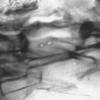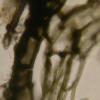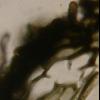
19-08-2011 09:29
 Alex Akulov
Alex Akulov
Dear Friends Today I had the opportunity to see a

17-08-2011 22:51
 Alex Akulov
Alex Akulov
Dear Friends During my recent trip to the Carpath

14-08-2011 17:47
 Alex Akulov
Alex Akulov
Dear FriendsYesterday ended my second in this year

12-08-2011 14:54
roman vargas albertoHello, Do you know if the Peziza arvernensis has i

04-08-2011 04:52
Roland LabbéBonjour !Voici une planche d'un Disco carbonicole
Bertia-related pyrenomycete?
Hans-Otto Baral,
11-03-2009 22:48
 Hi
HiI have here a pyreno with unitunicate asci that dissolve during maturity, the spores of which remind me of Bertia latispora. But the perithecia are smooth.
Descr.: 0.3-0.5 mm diam. Asci 6-8-spored, unitunicate, IKI-. Spores 23-35 x 8-11 µm, containing many minute LBs, 1-septate, very variable in shape.
Subaquatic on very rotten wood of Salix (or Populus), N-Germany (near Rehna, leg. T. Richter).
Zotto
Hans-Otto Baral,
11-03-2009 22:51
Hans-Otto Baral,
13-03-2009 22:17

Re:Bertia-related pyrenomycete?
Sorry, I corrected in the previous message that the perithecia often collapse.
Zotto
Zotto
MARIA VIRGINIA BIANCHINOTTI,
17-03-2009 21:10
Re:Bertia-related pyrenomycete?
Dear Zotto,
Have you seen Munk pores? Your ascospores are slightly similar to those of Bertia pulneyensis.
Virginia
Have you seen Munk pores? Your ascospores are slightly similar to those of Bertia pulneyensis.
Virginia
Hans-Otto Baral,
17-03-2009 22:32

Re:Bertia-related pyrenomycete?
Dear Maria
thanks, is it an Indian species? Where is it described? What do you mean with Munk pores?
Zotto
thanks, is it an Indian species? Where is it described? What do you mean with Munk pores?
Zotto
MARIA VIRGINIA BIANCHINOTTI,
18-03-2009 15:15
Re:Bertia-related pyrenomycete?
Yes, it is an Indian species described by Subramanian & Sekar in Kavaka 18: 19-90 (1990). Munk pores are small perforations that appear in the ascomatal cells. they are typical (but not exclusive) of the Coronophorales. Here are 2 photos of them.
MARIA VIRGINIA BIANCHINOTTI,
18-03-2009 15:15
Re:Bertia-related pyrenomycete?
Yes, it is an Indian species described by Subramanian & Sekar in Kavaka 18: 19-90 (1990). Munk pores are small perforations that appear in the ascomatal cells. they are typical (but not exclusive) of the Coronophorales. Here are 2 photos of them.
Virginia
Virginia
MARIA VIRGINIA BIANCHINOTTI,
18-03-2009 15:17
Hans-Otto Baral,
18-03-2009 18:45

Re:Bertia-related pyrenomycete?
Dear Maria
so they are pores in the wall of the peridial cells? Are they in the lateral wall between the peridial cells? Present in every cell or only locally? I will try to locate this feature.
Zotto
so they are pores in the wall of the peridial cells? Are they in the lateral wall between the peridial cells? Present in every cell or only locally? I will try to locate this feature.
Zotto
MARIA VIRGINIA BIANCHINOTTI,
18-03-2009 18:57
Re:Bertia-related pyrenomycete?
Dear Zotto, yes they are pores, not in every cell, randomly, 1 or2, sometimes more per cell, also in the lateral wall between cells. I´ve put a pdf of a paper in which you´d see more images.
Virginia
Virginia
Hans-Otto Baral,
22-03-2009 21:46



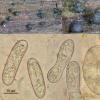
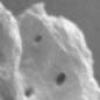
 7145.pdf
7145.pdf
